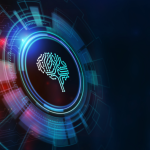Autonomous Agents Are The New Future: Complete Guide – AutoGPT Official
Autonomous agents stand out in today’s tech scene for their unique ability to act on their own. This makes them a key player in the evolution of AI. They can make decisions, learn from their actions, and interact with their environment in ways that were once thought to be the sole domain of humans.
Their impact is vast, touching everything from how we work to how we live, promising to make our interaction with technology more seamless and intuitive.

Autonomous agents are smart systems capable of making their own choices. Unlike standard AI, which follows strict rules, these agents decide their next move based on their surroundings and goals. This ability makes them stand out in the world of tech.
- Definition: At their core, autonomous agents are systems that operate on their own to achieve specific tasks. This independence sets them apart from more traditional forms of AI.
- Difference from Traditional AI: Unlike conventional AI that needs direct instructions for every action, autonomous agents use their understanding of the world to act without being told what to do every step of the way.
These agents represent a leap forward in how machines interact with the world around them, offering a glimpse into a future where technology is more adaptable and intuitive.
Basics of Autonomous AI Agents
Getting to grips with AI autonomous agents means understanding how these systems can think and act without human help. They’re set to change the way we interact with machines, making technology more responsive and personal.
- Understanding AI Autonomous Agents: These agents are smart, and able to learn and adapt over time. They can figure out what to do in new situations, making them invaluable across many areas of life and work.
- Operating Independently: Their real power lies in their ability to work alone in various settings. From managing homes to running complex software, autonomous agents can take on tasks without needing constant guidance.
This independence is what makes this so promising. They’re not just another piece of technology but a fundamental shift towards more intelligent, self-reliant systems that can improve efficiency and innovation.
Evolution and Types of Autonomous Agents
The journey of autonomous agents from simple concepts to complex systems is a testament to human ingenuity. Their evolution showcases the rapid advancements in technology.
From Past to Present: The idea of machines that can think and act independently has been around for decades, but only recently have we seen this become a reality. Thanks to leaps in AI and machine learning, It is now more than just a theory.
Variety of Agents: These agents come in many forms, including:
- Software Agents: Programs that perform tasks online, like filtering emails or personalized shopping.
- Robotics: Machines that can move and interact with the physical world, such as drones or robotic arms in factories.
- AI-Driven Systems: Complex algorithms that can analyze data and make decisions, used in areas like finance and healthcare.
Each type of agent has its own strengths, opening up a world of possibilities for how we can use them. Whether it’s automating routine tasks or solving complex problems, It is the forefront of technological innovation.
Key Features of Autonomous Agents
Autonomous agents shine thanks to four main traits: autonomy, reactivity, proactiveness, and social ability. These features help them navigate and interact with their world in smart ways.
Autonomy
Autonomy lets these agents make their own decisions. This means they can operate without human input, using their programming and learning from their experiences to figure out the best course of action.
Reactivity
Reactivity is their ability to sense changes in their environment and respond in real time. This quick adaptation is crucial for tasks that require immediate attention, ensuring that autonomous agents can handle unexpected situations with ease.
Proactiveness
Proactiveness involves taking initiative. Instead of just reacting to the world, autonomous agents can anticipate needs or problems and act to address them ahead of time. This forward-thinking approach is what sets them apart from simpler automated systems.
Social ability
Social ability refers to how these agents interact with humans and other machines. Effective communication and collaboration are key, allowing for more complex tasks to be accomplished through teamwork.
Together, these features equip autonomous agents with the tools they need to tackle a wide range of tasks, making them a versatile and valuable asset in the AI landscape.
OpenAI and Autonomous Agents

OpenAI has been a key player in the growth of autonomous agents. Their work shows how far AI can go, offering new ways for machines to learn and act.
OpenAI’s agents stand out because they can tackle tough tasks, learn quickly, and even work with humans. From games to research, these agents are showing what smart systems can do.
Their research doesn’t just push tech limits; it paves the way for more useful and user-friendly AI. As OpenAI keeps exploring, the future of autonomous agents looks bright, promising tech that’s more in tune with our needs.
Autonomous Agents in AI: The Core Tech
They are transforming AI, making systems smarter and more independent than ever. Their ability to make decisions and learn from experiences is revolutionizing technology.
- Learning Over Time: Through machine learning and neural networks, these agents evolve, improving with each task.
- Spotting Patterns: They can identify trends in data, helping to predict and react to future events.
- Making Decisions: These agents decide on the best course of action based on their programming and what they’ve learned.
This self-learning capability is what sets it apart. They’re not just following instructions; they’re growing smarter with each interaction.
Adding to this, the integration of autonomous agents into AI doesn’t just advance the technology itself. It changes how we interact with machines, making our experiences more seamless and intuitive. As these agents become more embedded in our daily lives, they promise to make technology an even more integral and adaptive part of our world.
This post was originally published on 3rd party site mentioned in the title of this site

